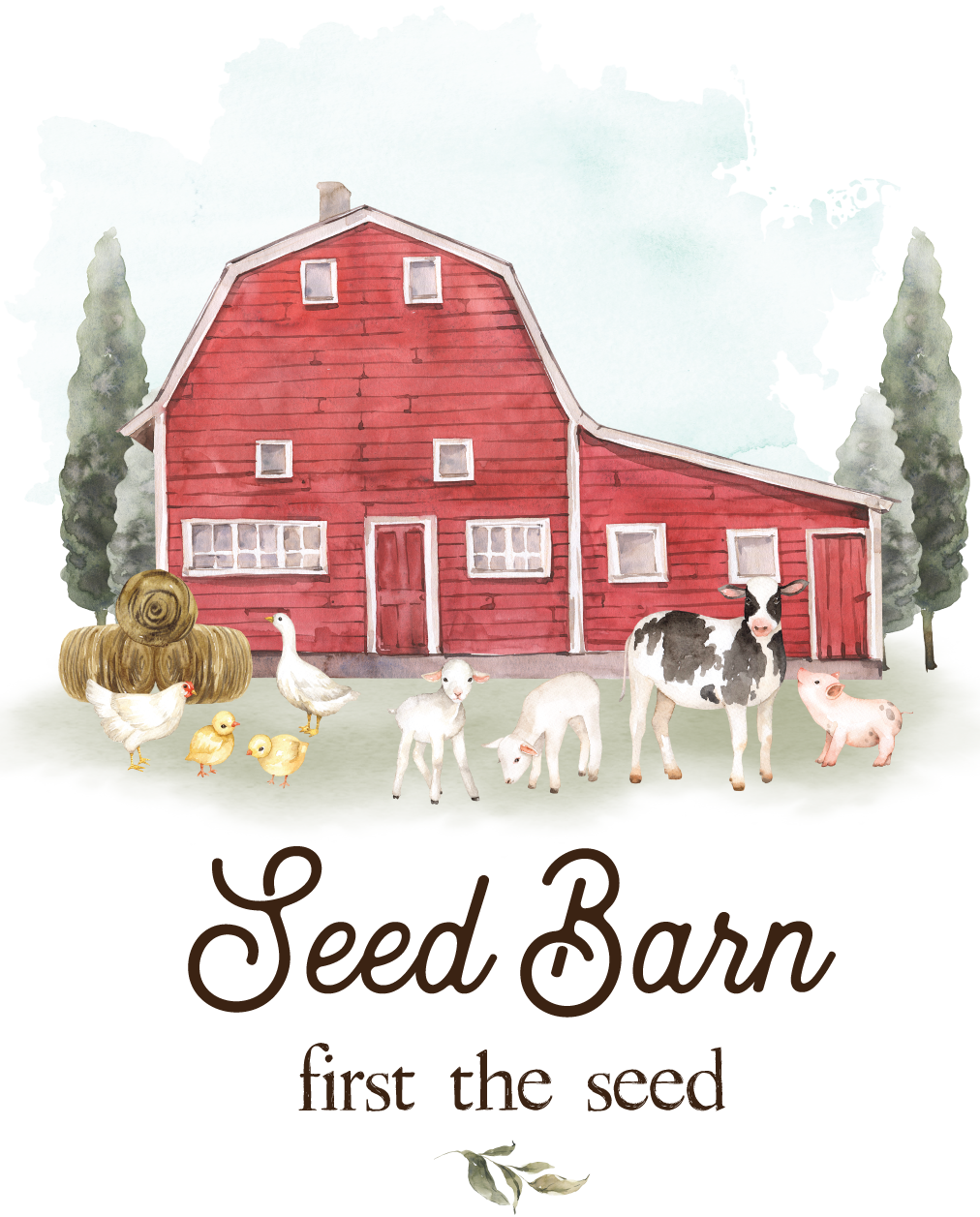Limited Time Free Shipping On The Entire Store
Tel: 813 540 2000 | Mon - Fri 8am - 5pm Est. | Email: support@seedbarn.com
Plant 10 - 15 Lbs. per Acre
Timothy
is a bunchgrass that grows 2-4 feet tall. It grows best in cooler
climates. Timothy is used primarily as a hay crop. When planted in the
majority of Tennessee conditions, summer droughts cause stand reduction.
Stands are not expected to last more than 3-4 years. It is a popular
hay crop for horses, although orchardgrass and tall fescue can also be
used successfully.
Timothy was introduced to North America by
seed carried from Europe by early settlers in hay, litter, manure and
ballast cleaned from ships. It was found growing in New Hampshire in
about 1711 and was named "herdsgrass". It was first given the name
timothy in 1747 and soon became an adapted, high-quality hay plant. It
spread from New England into eastern Canada before 1800, and then
westward as the country was settled.
Description
Timothy
is a rapidly-developing, short-lived, perennial bunchgrass with
shallow, fibrous roots extending downward to about 4 feet. Its crown
consists of a group of bulb-like sections called corms. These produce a
mass of basal leaves and usually one leafy stem of 20 to 40 inches that
ends in a seed head. All leaves are soft, light green and 2 to 6 inches
long. The single seed is small and is enclosed in an awned, urn-shaped
husk. Individual timothy shoots are typically biennial, but the plant
maintains itself as a perennial through the development and growth of
new shoots from bases of older culms.
Adaptation
Timothy
volunteers readily and is adapted to the cooler, moister areas of
Montana, especially the poorly-drained alluvial soils, where it grows
vigorously. As it is very tolerant of acidity, withstands some spring
flooding and does well on waterlogged soils, it is well suited for use
in low-lying, peaty areas. Timothy also thrives on clay, silt and sandy
soils in cool climate regions with precipitation greater than 15 inches
per year. It is winterhardy, persistent and fairly free from problems
caused by insects, diseases and other pests. It is widely adapted and
can be grown successfully under a wide range of soil and climatic
conditions. Timothy is hardy at elevations up to 9,000 feet. Timothy
survives a few weeks of flooding during the winter, but only a few days
in the growing season. Seedling vigor is good and stand establishment
usually is rapid. It ranks high in productivity among the grasses.
Limitations
The
major limitation of timothy is its shallow root system and the
resulting low tolerance of drought. It does not tolerate salt or
alkalinity so that it is not adapted to sloughs and low lands in many
areas of Montana.
Its small seed size necessitates very shallow
seeding and makes even distribution of seed difficult with conventional
drills. Established plants are intolerant of shade and do not withstand
lengthy flooding during the growing season. It is susceptible to winter
crown and root rots. Root production has been reported as low when
compared to other grasses.
It should not be cut or grazed during
the two week period before heads emerge as this is a critical stage in
the growth of the plant. Removing the top growth at this time greatly
weakens the original plants, and the cycle of regeneration is
interrupted because the buds for the second shoots are not adequately
formed.
Use for Hay
Timothy is well
suited to hay production, and timothy hay is especially desirable for
the horse hay market. Growth is erect, easy to harvest and a full yield
is normally possible in the first production year after seeding. Because
of its bunch growth habit, it is less competitive for nutrients when
grown in mixtures with legumes. Bunch growth also allows for
alternate-row seeding which makes it ideal for mixtures with alsike and
red clover and, in some cases, it is preferred for use with alfalfa.
Its
main drawback is the serious loss of quality (protein) experienced if
it is not harvested for hay before the bloom stage. Growing timothy in
mixtures with legumes and harvesting early will overcome this problem.
Although timothy is fairly tolerant of low fertility, the application of
fertilizer, especially nitrogen, increases both yield and protein.
Timothy
has been the standard hay for horses. When cut in full bloom, its high
energy and low protein content were ideal for working stock. Its
popularity is due to the fact that the grass seldom lodges, and is
easily cured into bright, clean hay that is free from dust or mold and
which can be handled with little waste.
Use for Pasture
Where
adapted, timothy is commonly used for pastures. Spring growth is not
too early although yield and palatability are very high. Leafy shoots
are of excellent quality. Like smooth bromegrass, however, the main
growth occurs in early summer and the tall shoots are easily overgrazed.
Pasture rotation is critical and a much greater area is required after
mid-July to compensate for decreased growth rate.
This grass is
palatable to cattle and horses at all stages of growth. Deer and elk
appear to only graze mature timothy plants after other grasses have been
used. As a pasture plant, it is relatively short-lived and stands are
soon depleted unless provision is made for natural or artificial
reseeding. It produces an open sod that is easily weakened if heavily
grazed.
Seeding
Timothy is recommended to be planted at a rate of 10 - 15 lbs per acre.
Top Notch Guarantee
Fast Free shipping
Traditional Farmers
OMRI Listed Products
By clicking “Accept All Cookies”, you agree to the storing of cookies on your device to enhance site navigation, analyze site usage, and assist in our marketing efforts.
